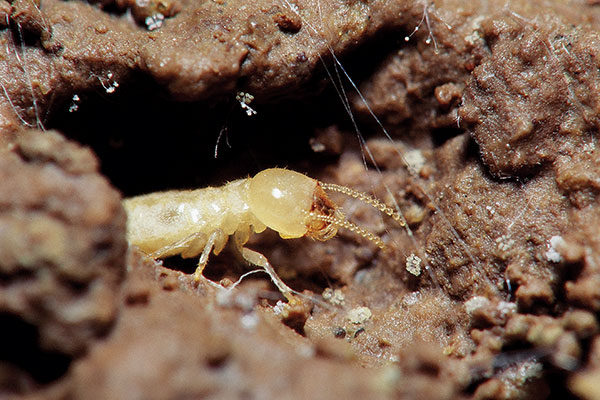
Photo courtesy of, and copyrighted by, Gene White, pmimages@earthlink.net
Dirt-filled porches, also known as stoops, are common in split-level, basement and crawlspace construction. It turns out that these porches are highly attractive for termites because they meet the termite’s essential needs for abundant living: shelter, food, moisture and soil.
A stoop is essentially a concrete box attached to a home, filled with dirt and construction debris, including scrap wood, rocks, tree stumps and trash, intermingled to create an ideal habitat for termites. Additionally, as porches settle and separate from the structure, rain can drain between the porch slab and the structure, providing the moisture conditions termites need.
To top things off, dirt-filled stoops are complicated to treat. Creating a continuous, termiticide-treated zone in the soil is difficult when rodding from above, as rocks and other debris divert termiticide away from foundation walls. Soil inside stoops can settle over time, resulting in a void between the soil and the bottom of the slab.
Not only will termites build shelter tubes against a foundation wall, they will also tunnel up the interior side walls of the stoops and hang tubes upside down beneath porch slabs. In this manner, they can avoid contact with the treated zone altogether. To combat the consequences of this unique construction, supplement traditional vertical rodding and sub-slab injection techniques with foam formulations and horizontal rodding to ensure all potential entry routes are covered.
By recognizing the potential complications associated with dirt-filled porches, and understanding why this construction type can be troublesome, PMPs can be better prepared to tackle dirt-filled porches and the challenges that they create.
Dr. Fredericks, VP of technical and regulatory affairs for the National Pest Management Association (NPMA), can be reached at jfredericks@pestworld.org.
Leave A Comment